More companies hiring for cultural fit, not skills
Posted on March 9th, 2015 Read time: 2 minutes
A single bad hire can cost a company up to $50,000, according to a 2012 CareerBuilder study. Money lost from lower productivity and costs associated with recruitment, training and the negative impact on employee morale all add to a loss of up to $5 million for every 100 companies that hire one wrong person. Most of the time, new employees fail because of poor cultural fit, not because of skill. Using temporary workers may help companies avoid a costly hiring mistake.
Culturally fit workers can reduce turnover and costs
To reduce turnover rates, 88 percent of employers are now placing more value on the cultural alignment of candidates than on their abilities.
“Cultural fit is incredibly important on a candidate’s abilities to use his skills,” Nancy Rothbard, an associate professor of management at The Warton School, told Fortune. “You have a positive effect through skills, but culture completely cancels that out.”
A recent international study of 500 companies, conducted by Cubix, revealed that 82 percent of businesses believe assessing cultural fit is an important part of the hiring and selection process, and 75 percent view cultural fit as a good predictor of future job performance.
Find the best fit through temporary workers and employers of record
Hiring temporary or contract workers gives employers the time to assess an employee’s cultural fit as they consider them for a permanent position. It allows companies the flexibility to replace them, if they find the workers are not a good fit, before they incur expenses associated with comprehensive training and staff integration programs. It also gives managers time to develop the abilities of workers who fit the culture, but lack skills.
An employer of record may be a great way to hire these “culturally fit” candidates. Companies can use these third-party services to outsource the hiring, payroll, and general HR functions for a new hire, allowing them to test out new employee for a trial period before deciding whether to make a permanent offer of employment.
Defining company culture
To help identify “culturally fit” candidates, companies need to first define their own culture. Is the environment casual or formal? Are employees quirky or traditional, autonomous or team-oriented, energetic or laid-back? Is the staff self-managed or micromanaged? What are the company’s values? The answers to questions such as these can help employers identify the traits to seek in candidates who will fit in best.
Related Articles
Posted on March 9th, 2015 Read time: 2 minutes
A single bad hire can cost a company up to $50,000, according to a 2012 CareerBuilder study. Money lost from lower productivity and costs associated with recruitment, training and the negative impact on employee morale all add to a loss of up to $5 million for every 100 companies that hire one wrong person. Most of the time, new employees fail because of poor cultural fit, not because of skill. Using temporary workers may help companies avoid a costly hiring mistake.
Culturally fit workers can reduce turnover and costs
To reduce turnover rates, 88 percent of employers are now placing more value on the cultural alignment of candidates than on their abilities.
“Cultural fit is incredibly important on a candidate’s abilities to use his skills,” Nancy Rothbard, an associate professor of management at The Warton School, told Fortune. “You have a positive effect through skills, but culture completely cancels that out.”
A recent international study of 500 companies, conducted by Cubix, revealed that 82 percent of businesses believe assessing cultural fit is an important part of the hiring and selection process, and 75 percent view cultural fit as a good predictor of future job performance.
Find the best fit through temporary workers and employers of record
Hiring temporary or contract workers gives employers the time to assess an employee’s cultural fit as they consider them for a permanent position. It allows companies the flexibility to replace them, if they find the workers are not a good fit, before they incur expenses associated with comprehensive training and staff integration programs. It also gives managers time to develop the abilities of workers who fit the culture, but lack skills.
An employer of record may be a great way to hire these “culturally fit” candidates. Companies can use these third-party services to outsource the hiring, payroll, and general HR functions for a new hire, allowing them to test out new employee for a trial period before deciding whether to make a permanent offer of employment.
Defining company culture
To help identify “culturally fit” candidates, companies need to first define their own culture. Is the environment casual or formal? Are employees quirky or traditional, autonomous or team-oriented, energetic or laid-back? Is the staff self-managed or micromanaged? What are the company’s values? The answers to questions such as these can help employers identify the traits to seek in candidates who will fit in best.






